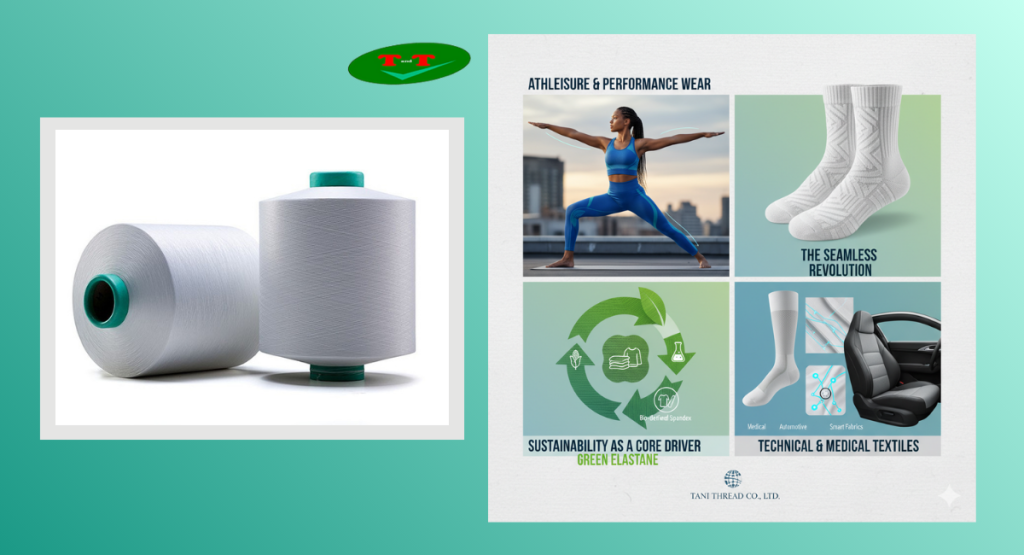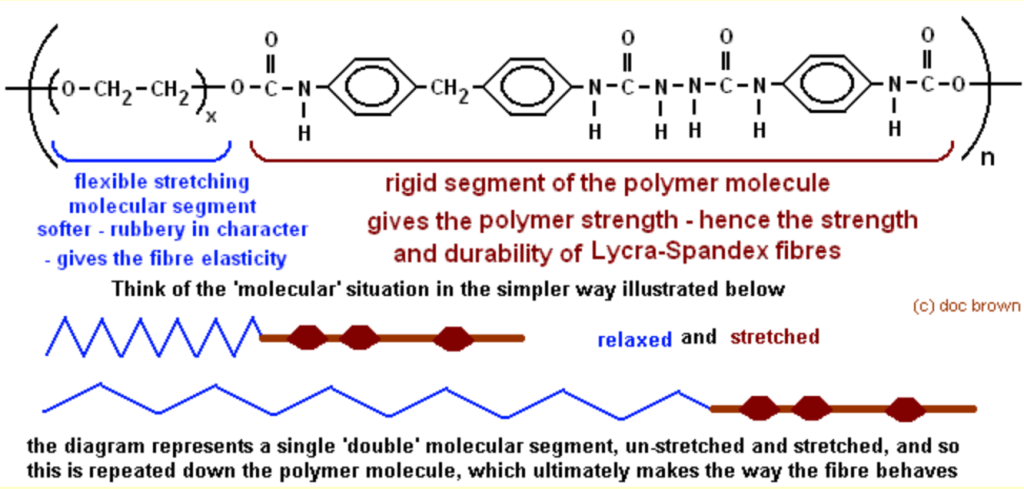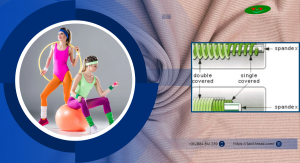In an era dominated by comfort, movement, and performance, one material has seamlessly woven itself into the fabric of our daily lives: Spandex yarn. Found in everything from high-intensity activewear and comfortable denim to supportive shapewear and sleek swimsuits, this remarkable fiber is the invisible force behind superior fit and freedom. But what exactly is Spandex yarn, how did it become so indispensable, and why is it known by so many different names?
This guide demystifies the world’s most essential elastic fiber, exploring its definition, history, and the key market trends driving its relentless global demand.
What is Spandex Yarn?
Spandex yarn is a synthetic fiber renowned for its exceptional elasticity. Chemically, it is a long-chain polymer composed of at least 85% segmented polyurethane. What sets it apart is its ability to be stretched to over 500% of its original length and then spring back to its initial form without significant loss of integrity. This extraordinary “memory” is due to its two-part molecular structure: rigid segments that provide strength and flexible segments that allow for immense stretch.

It’s crucial to understand that Spandex is rarely used as a standalone yarn in fabrics. Instead, it is strategically integrated in several primary forms to optimize performance and aesthetics:
- Bare Yarn: Used as-is in lightweight applications like hosiery or during the weaving/knitting process with other yarns (e.g., in denim), where it provides subtle, multi-directional stretch.
- Covered Yarn: A bare Spandex filament is physically wrapped or coiled with one or two strands of a non-elastic fiber like nylon or polyester. This method protects the Spandex core and allows the aesthetic qualities of the covering yarn (like color, texture, or moisture-wicking) to dominate the fabric’s surface.
- Core-Spun Yarn: This is a more integrated process where a stretched Spandex filament is used as the core, and staple fibers like cotton or rayon are spun around it. When the tension is released, the Spandex core contracts, creating a bulky, stable yarn with superior strength and recovery, ideal for heavy-use items like t-shirts and leggings.
The true genius of Spandex yarn lies in its synergistic partnerships with other fibers. By combining its unparalleled elastic power with the natural feel of cotton, the durability of polyester, or the softness of rayon, it creates hybrid yarns that offer the best of all worlds. This versatility ultimately defines its core characteristic: Spandex is an enabling fiber. It provides the foundational stretch and recovery that elevate other materials, transforming rigid fabrics into dynamic, comfortable, and performance-driven textiles.
History of Spandex Yarn
The quest for a superior synthetic elastic fiber began during World War II due to shortages of natural rubber. While scientists in both the United States and Germany experimented, the breakthrough that led to commercial Spandex is credited to chemist Joseph Shivers at DuPont’s Benger Laboratory in the 1950s.

After nearly a decade of research, Shivers and his team developed a polyurethane-based fiber that offered significant advantages over rubber: it was stronger, lighter, more durable, and resistant to degradation from oils, sweat, and detergents. In 1959, DuPont introduced this fiber to the world under the trademark name Lycra®.
The introduction of Spandex (an anagram of the word “expands”) revolutionized the textile industry. It first gained popularity in women’s lingerie and girdles, offering comfort and control without rigidity. Over the following decades, its use exploded into sportswear, swimwear, and eventually, everyday apparel, fundamentally changing our expectations of what clothing should feel and perform like.
This widespread adoption, however, led to a marketplace filled with various names for the same miraculous Spandex yarn, creating a common point of confusion that persists today. So, how can we navigate this terminology surrounding Spandex yarn? And what truly sets these names apart in the debate of Lycra® vs. Elastane?
Spandex Yarn vs. Lycra® vs. Elastane — What’s the Difference?
Walk into any fabric store or read the label on your favorite pair of leggings, and you’ll encounter a trio of terms that seem interchangeable: Spandex, Lycra, and Elastane. Are they all the same thing, or is there a crucial distinction that brands and consumers are missing? Unraveling this terminology is key to understanding what you’re really using.

- Spandex: This is the generic name for the fiber category in the United States and many other parts of the world. The term was coined as an anagram of “expands,” perfectly describing its primary function. When a fabric is labeled “95% Cotton, 5% Spandex,” it uses the generic U.S. term for the elastic component.
- Elastane: This is the exact same generic fiber, but the term is commonly used in Europe and other regions. It is the standard term under the ISO (International Organization for Standardization). So, a garment sold in Europe might be labeled “95% Cotton, 5% Elastane.” There is no technical or chemical difference between Spandex and Elastane; the difference is purely geographical and linguistic.
- Lycra®: This is where the critical distinction lies. Lycra® is not a generic term for the fiber itself. It is a branded trademark for Spandex/Elastane yarn owned by The Lycra Company (which was spun off from DuPont). Think of it like this: all Lycra® is Spandex, but not all Spandex is Lycra®. The Lycra® brand often signifies a commitment to a certain standard of quality, performance, and consistency, backed by the company’s research and development. Fabrics containing Lycra® may undergo specific testing to earn the brand’s hangtag.
In essence, Spandex and Elastane are the material, while Lycra® is a specific, branded version of that material. Understanding this helps in making informed decisions, as a branded fiber often comes with guaranteed performance benchmarks.
Conclusion
From its revolutionary post-war origins to its current status as a textile staple, Spandex yarn has proven to be more than just a trend. It is a foundational component of modern apparel, enabling the comfort, fit, and functionality that today’s consumers demand. Understanding what it is, its history, and the nuances between its names provides valuable insight into the very fabric of the contemporary fashion and textile industry. As trends continue to favor performance, sustainability, and technical innovation, the role of Spandex yarn is set to become even more central and sophisticated.
Trying to navigate the world of stretch fabrics for your next project? Contact us today to explore our range of high-performance and sustainable Spandex yarns, and let our experts help you find the perfect elastic solution tailored to your technical and design needs.
TANI THREAD CO., LTD
- Address: Thanh Hoa Hamlet, Thanh Dien Commune, Chau Thanh District, Tay Ninh Province, Vietnam
- Hotline: 0984.841.239
- Email: sale@tanithread.com
- Website: tanithread.com



